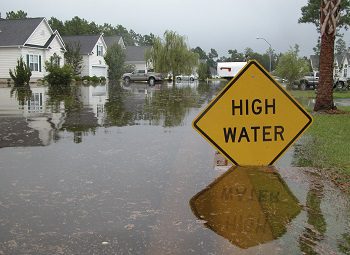
Excess Flood Coverage For Homeowners
Floods are one of the most common and costliest home hazards, as even minor water damage can destroy a property. While the National Flood Insurance Program (NFIP) can provide the property insurance to help you recover from the damage, it may not cover all your flood risks.
Most policies purchased through the NFIP have dwelling coverage limits of $250,000, and if a flood causes too much damage, you may not have enough to rebuild or repair your home. Homeowners whose houses would cost more to rebuild than the NFIP flood insurance limit should consider buying excess flood insurance, which they can purchase through a private insurance company.
Who Needs Excess Flood Coverage?
The two biggest factors when considering excess flood coverage for your home are the property value and the mortgage company you used to secure a loan.
If you use a federally backed mortgage program, you may have to purchase an NFIP policy, especially if you live in an area at high risk of flooding. However, if it would cost more than the $250,000 NFIP coverage limit to rebuild your home after a flood, you should also consider buying an excess flood policy.
Because flood damage can also put the lender at risk, you may also be required to secure excess coverage at the time you buy the home. Lenders may also require you to carry flood insurance that covers one of these three amounts:
- Your home’s replacement cost
- The remaining balance on your mortgage
- The $250,000 NFIP coverage limit
Keep in mind that even if you aren’t required to buy excess coverage, these policies can give you the funds you need to rebuild or replace your home after a flood. They are security that is worth having.
How Does Excess Flood Coverage Work?
The terms of an excess flood policy usually match the ones found in your NFIP policy. However, rates and coverage options will vary between different insurers.
While the NFIP determines rates based on the average loss in a particular flood zone, the private insurers that provide excess coverage look at a number of other factors, including the following:
- Your home’s age, construction materials, elevation and distance from bodies of water
- The foundation structure (e.g., basement, crawl space or slab)
- The direction your home faces
Excess flood policies typically don’t have a deductible, since they’re only triggered when a loss exceeds the limits of your NFIP policy. And, while excess insurance will cover the same losses as the regular flood policy, some insurers may add extra coverage options:
- Lost income from rental properties
- Additional living expenses
- Flood prevention expenses
Choosing The Best Coverage Option
Although floods damage and destroy countless homes every year, both the NFIP and excess coverage can help protect you. Contact your Ramey Insurance agent now to learn more about how we can help you expand upon your policy in the most optimized ways.
Also Read: Does Flood Insurance Cover Hurricane Damage?
Categories: Blog
